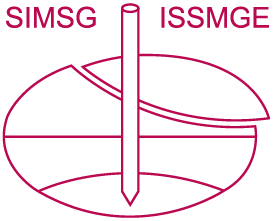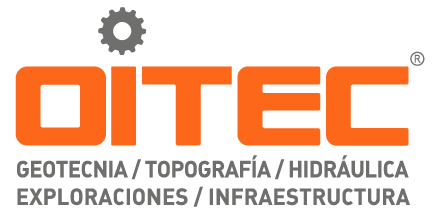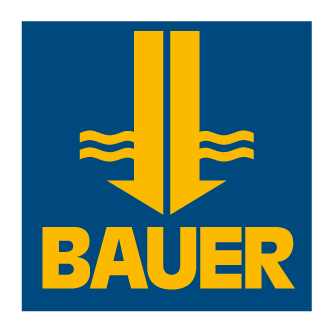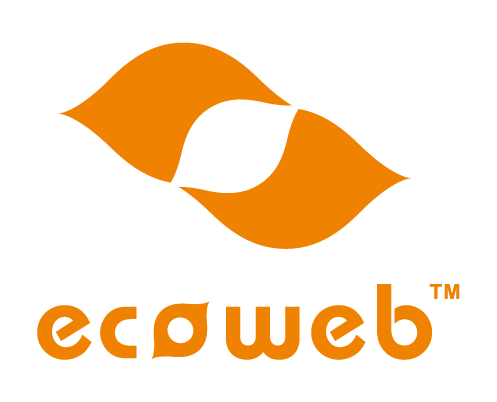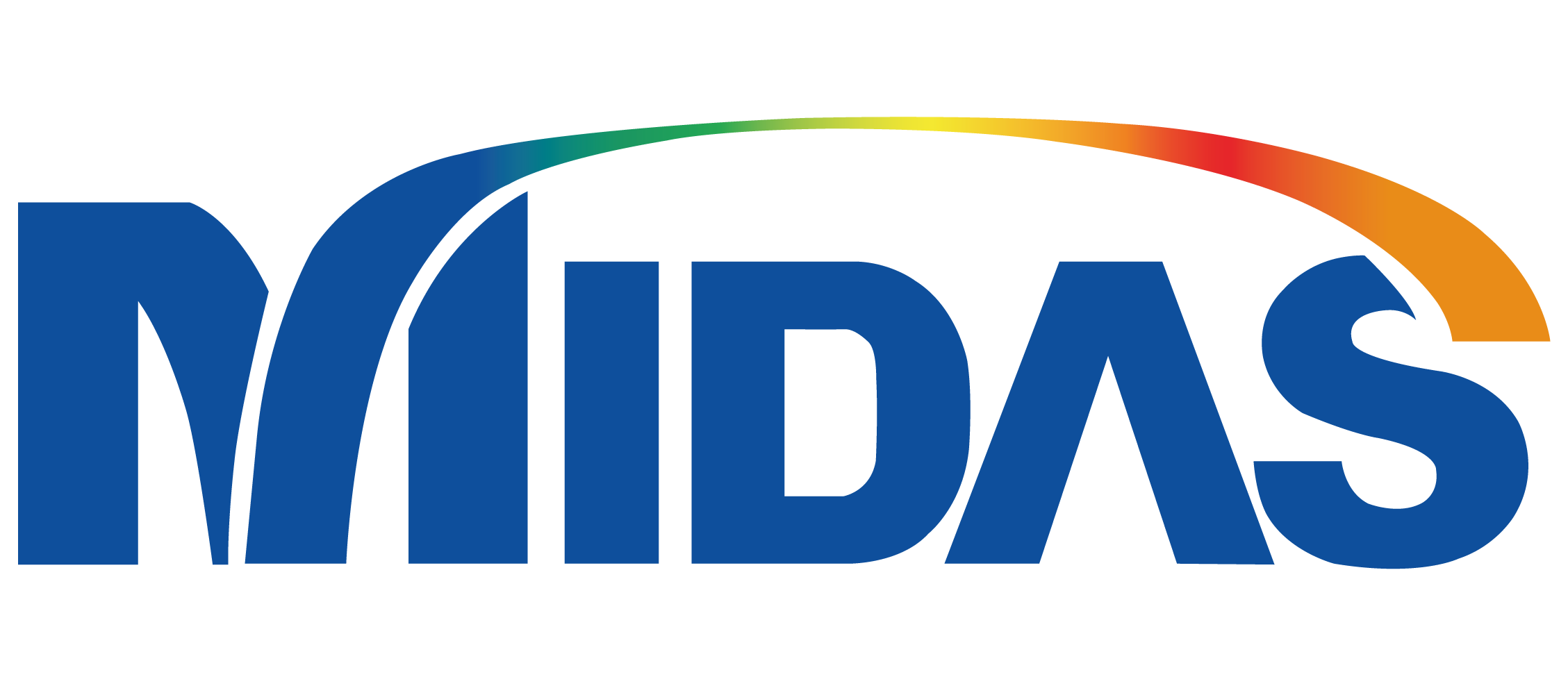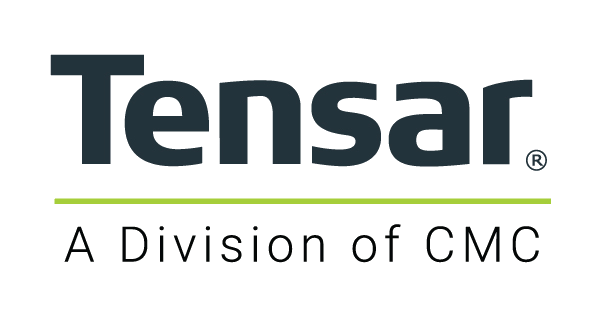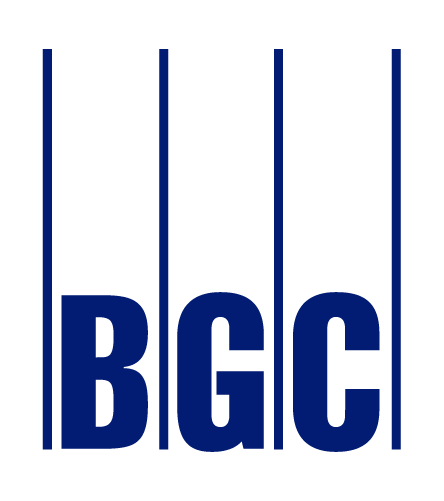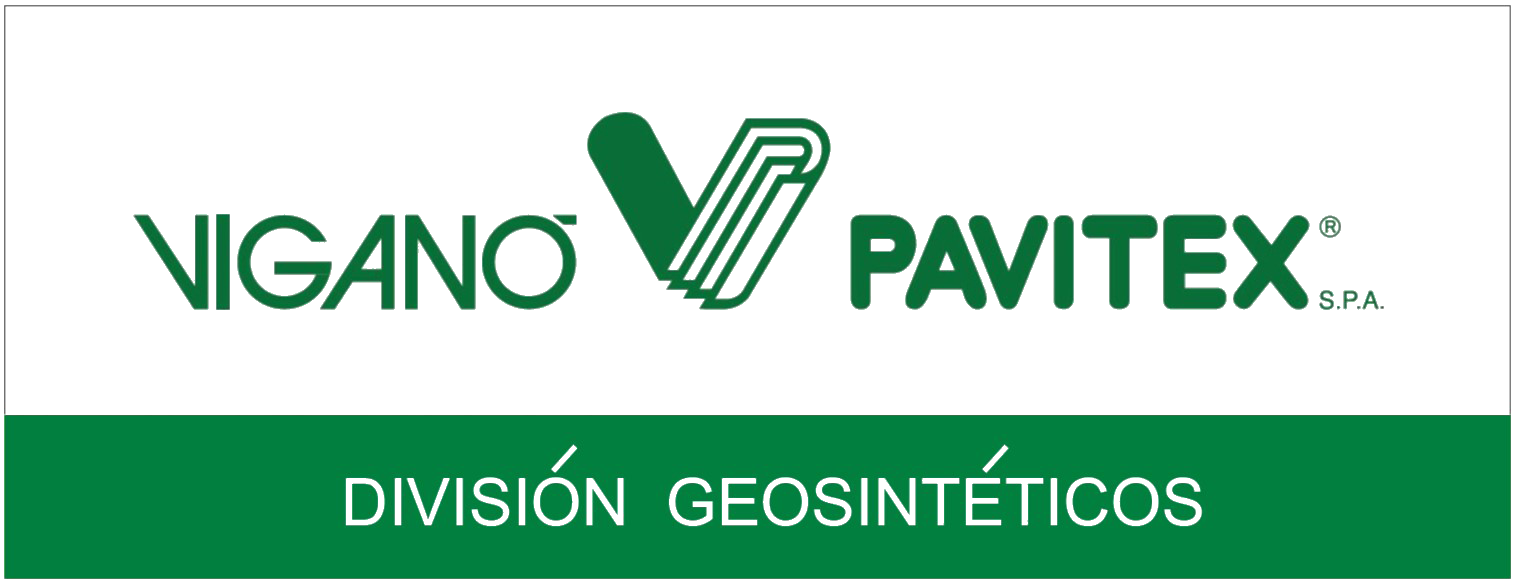November 12-16
2024
cordially invited to participate
Dear colleagues: On behalf of the Chilean Geotechnical Society (SOCHIGE), you are cordially invited to participate in the 17th Pan-American Conference on Soil Mechanics and Geotechnical Engineering (XVII PCSMGE) and 2nd Latin-American Regional Conference of the International Association of Engineering Geology and the Environment (IAEG) to be held in La Serena, Chile in November 2024. We are delighted to organize this event, for the second time, after hosting it back in 1991.
With an average width of 180 kilometers and a length of about 5000 kilometers, Chile is bordered by the Pacific Ocean to the west and the majestic Andes Mountains to the east. These characteristics result in a country with a wide variety of climates and vegetation, as well as both soil and rock conditions along its territory. As part of the Circum-Pacific Belt, Chile is one of the great seismically active regions in the world, which is of particular interest to geoscientists and geotechnical engineers worldwide.
The Panamerican congress will serve as a unique platform for dissemination of knowledge and fruitful interactions among researchers and practitioners from different generations and nationalities. We are excited to keep growing as a community and your attendance is essential to the success of this conference. We look forward to receiving you in our country!
CERTIFICATES
Download your attendance, speaker or moderator certificate here.
Precongress courses certificates and Paper’s autors Certificates soon available
Congress photo gallery
Key dates
Conference - November 2024
• Thursday 7th: Last day for online registration
• Tuesday 12th: Start of registration at headquarters / Workshops / Short courses / Registration / Opening
• Wednesday 13th – Friday 15th: Conference
• Saturday 16th: Technical visits / Side Activities
Papers
• Deadline for abstract submission: 31st August 2023
• Notification of abstract acceptance: October 30th, 2023
• Paper submission deadline: April 30th, 2024
• Notification of paper acceptance: up to July 31st, 2024
• Final paper due: July 31st, 2024
Conference Themes
TECHNICAL COMMITTEE
Edgar Bard (Chile)
Carlos Ovalle (Chile/Canada)
Alexandra Ossa (Mexico)
Heraldo Giacheti (Brazil)
Lab and in situ testing
Physical and constitutive soil modeling
Unsaturated soils
Soft soils
Residual and saprolitic soils
Rockfill
Soil geochemistry
TECHNICAL COMMITTEE
José Campaña (Chile)
Eloy Santos (Chile)
Juan Manuel Pestana (Venezuela/USA)
Miguel Manica (Mexico)
Werner Bilfinger (Brazil)
Numerical modeling
Seismic analysis of natural soil deposits and geotechnical structures
Mining structures
Talings dams
Infrastructure and transport works
Foundation of buildings and large works
Transportation geotechnics
Monitoring and observational method
TECHNICAL COMMITTEE
Juan Manuel Fernandez (Chile)
Mario Terceros (Bolivia)
Walter Paniagua (Mexico)
Mauricio Sales (Brazil)
Soil improvement
Use of geosynthetics
Special foundations
Rehabilitation of geotechnical structures
Advances in instrumentation and sensing systems
New image-based technologies in geotechnics
TECHNICAL COMMITTEE
Sergio Sepúlveda (Chile – Canada)
Stella Moreiras (Argentina)
Victor Hernández-Madrigal (Mexico)
-
Engineering Geology
-
Environmental Geology and Geotechnics
-
Applied Hydrogeology and Water Resources
-
Rock Mechanics and applications
-
Geohazards remote sensing and monitoring
-
Geologic hazard and risk assessment, and territorial planning
TECHNICAL COMMITTEE
Cesar Pasten (Chile)
Douglas Cortés (USA)
Marta Miletic (USA)
Joan Larrahondo (Colombia)
Yolanda Alberto (Chile – Mexico – Canada)
Renato Pinto da Cunha (Brazil)
-
Energy geotechnics
-
Geotechnical uncertainty
-
Biogeotechnics
-
Machine learning and big data in geotechnics
-
Sustainability and climate change
TECHNICAL COMMITTEE
Matías Silva (Chile)
Pooneh Maghoul (Canada)
Cristina de Hollanda Cavalcanti Tsuha (Brazil)
Carol Murillo (Colombia)
-
Geotechnical Engineering and sustainable development
-
Education of Earth Sciences and Geotechnical Engineering
-
Academia and practice in Geotechnical Engineering. How to diminish the gap
-
Geotechnical works and their impact on communities
Welcome ceremony
"International Perspectives on the Crucial Role of Geoengineers in Socionatural Disaster Response"

Dimitrios Zekkos, PhD, PE,
Moderator
Professor, University of California at Berkeley - Founder & Partner, ARGO-E GROUP

Prof. Ellen Rathje, PhD, PE, F. ASCE
Speaker
Janet S. Cockrell Centennial Chair in Engineering - Department of Civil, Architectural, and Environmental Engineering - University of Texas

Prof. Fernando Marinho, PhD
Speaker
Associate Professor in Universidade de São Paulo
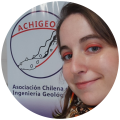
Natalia Garrido Urzua
Speaker
Geóloga Sernageomin - Past-President ACHIGEO
Invited Lectures
Below is a list of some of the invited lectures that will be featured at the congress.

Prof. Carlos Santamarina, G. Wayne Clough Chair and Professor at Georgia Tech
Soil properties: Casagrande's prologue to the future

Alessandro Mandolini, Professor of “Foundation Engineering” at Department of Engineering – Università degli Studi della Campania “L. Vanvitelli”
TC212 1st ISSMGE Harry Poulos Honour Lecture: “Rethinking piles in light of current knowledge

Prof. Fernando A. M. Marinho, PhD, Associate Professor in Universidade de São Paulo
TC106: 2nd Pan-American Distinguished Lecture on Unsaturated Soils Exploring the Interplay Between Water, Grains, Suction and Infrastructure

Prof. Doug Stead, Emeritus Professor Simon Fraser University, Canada.
Progress toward understanding complex rock slope failure mechanism

Prof. Katerina Ziotopoulou, Associate Professor in Civil and Environmental Engineering. University of California, Davis.
Assessment of liquefaction effects on infrastructure

Andy Small, PEng. Geotechnical Engineer specialized in dam safety and dam design. ICOLD and CDA leading member. Senior geotechnical consultant at Klohn Crippen Berger (KCB).
What could Tailings Facility Engineering look like in 2030?

Ramón Verdugo, Ph.D. CMGI Ltda.
Geotechnical lessons left by XXI century (2000-2004) large earthquakes

Prof. Marcio Almeida, Full Professor at Federal University of Rio de Janeiro COPPE-UFRJ
Offshore Geotechnical Solutions: from advanced physical modelling to applications

Prof. David Williams Professor and Director of Geotechnical Engineering Centre at The University of Queensland Manager Large Open Pit Project
Geotechnical, Geochemical and Erosional Stability of Waste Rock Dumps
TC221: Special Session on Tailings Dams
Christina Winckler (MSc) - Fernando Schnaid (PhD) - Edgar Quiroz (MSc) - Arcesio Lizcano (PhD) Osvaldo Flores (PhD) - Davis Solans (PhD) - José Campaña (MSc) - Ramón Verdugo (PhD) Moderator: Luis Valenzuela (MSc)
Bright Spark Lecture
The Young Member Presidential Group (YMPG), the International Society for Soil Mechanics and Geotechnical Engineering (ISSMGE), and the organizing committee of the XVII Panamerican Conference on Soil Mechanics and Geotechnical Engineering (PANAMGEO 2024) are delighted to announce the winners of the Bright Spark Award. These exceptional individuals will have the opportunity to present their insightful work at the conference.

Ph.D Kshama Roy
Principal Specialist, Energy Systems, DNV Canada Limited & Adjunct Professor, Memorial University of Newfoundland
“A Simplified Soil Constitutive Model for Sand: Advancing Soil-Structure Interaction Analysis for Sustainable and Resilient Buried Infrastructures”

MSc Emilia Castillo Fuentes
PhD Student Imperial College London.
“Foundation systems for floating wind turbines”

MSc. Mauro Sottile
SRK, Principal Consultant, Geotechnics
“A comparison of advanced constitutive models to evaluate flow liquefaction of upstream raised tailings dams”
1st Latam/Panam Geotechnical Engineering Professors' Meeting
We inform all the participants of this activity, carried out within the context of the Congress,
that they can now download their certificate of attendance by clicking on the button below.

PhD. Humberto Ivan Pehovaz
Aplicaciones de la Inteligencia Artificial en la docencia

Ph.D Gabriel Auvinet
Caracterización geotécnica de regiones de América

Ph.D Diego Manzanal
Laboratorio de suelos: Trayectoria de esfuerzos y teoría del estado crítico

Ph.D Raúl Aguilar
Dinámica de suelos: Influencia del tiempo en propiedades físicas del terreno

Ph. D Felipe Ochoa
Diseño sísmico de represas y tranques
HTC ISSMGE: Academia and industry collaboration to face the challenges of the next 100 years
The following is a list of the speakers who will present this activity

Lucky Nagarajan
Geocomp, Inc. Chair of WiDF, DFI Trustee, ASCE Met Section Board of Director, Women’s Network-Advisory Board Member.

Mónica Fernanda Bedoya Martínez
WSP Colombia and President of the Colombian Geotechnical Society.

Prof. Nilo Consoli
Universidade Federal do Rio Grande do Sul, Brasil.

Prof. Tim Newson
Western University, Canada. Immediate Past VP North America for ISSMGE.

Hugo Acosta
BG&E Resources Technical Director – Geotechnical, Ph.D Offshore Geomechanics.

Matías Silva
GHD Technical Director Tailings.
Geotalks: Professors and Young Minds Connecting
Register for the Youth and Teachers Meeting, scheduled for Wednesday, November 13th, 2024, from 18:30 to 20:00 hrs.
Free activity.
*Important: Remember that you must be previously registered for the Panamgeo 2024 Congress to participate in this activity.
This meeting aims to bring together professors and young professionals in the areas of geotechnical and engineering geology for a dynamic exchange of ideas and experiences. The day will begin with a series of presentations on current lines of research and innovative projects in the field, providing a space to share knowledge and strengthen academic and professional ties in a pleasant and relaxed atmosphere in which open conversation will be the protagonist. This space seeks to promote dialogue between generations, promoting new collaborations and connections within the geotechnical community.
CONNECTING THE YOUNG PROFESSIONAL NETWORK AND HIGHLIGHTING WOMEN’S PARTICIPATION IN GEOLOGICAL ENGINEERING
We invite you to this PANAMGEO Congress conference on Thursday, November 14th from 16:00 to 17:30 hrs. Join this talk with the professionals invited, we are waiting for you!
The following is a list of the speakers who will present this activity

Ph.D Vassilis Marinos
Speaker
IAEG President. Assistant Professor of Engineering Geology at the National Technical University of Athens, School of Civil Engineering.

Ph.D Katherine Tori
Speaker
ACHIGEO Vice-President

Msc. Sebastián Moya
Speaker
ACHIGEO Director

Ph.D Alejandra Serey
Moderator
ACHIGEO President. Postdoctoral Researcher at the Institute of Science and Engineering of Universidad de O'Higgins
Challenges in Space Geotechnical Engineering
We invite you to this PANAMGEO Congress conference on Thursday, November 14th from 16:00 to 17:30 hrs. Join us and participate in a learning experience with experts in the field, we are waiting for you!
The following is a list of the speakers who will present this activity

Pooneh Maghoul
Speaker
Associate Professor, Polytechnique Montréal

Pierre Delage
Speaker
Professeur, École des Ponts ParisTech

Douglas Cortes
Speaker
Assistant Professor, New Mexico State University

Robert Anderson
Speaker
NASA Jet Propulsion Laboratory

Roberto Moraes
Speaker
AECOM California

Helen D. Robinson
Moderator
Vice-President/Branch Manager/Senior Project Manager GEI
Improving Diversity in Geotechnical Engineering
We invite you to this PANAMGEO Congress conference on Friday, November 15th from 12:30 to 14:00 hrs. Join this talk with the professionals invited, we are waiting for you!
The following is a list of the speakers who will present this activity

Ph.D Ellen Rathje
Orador
Janet S. Cockrell Centennial Chair in Engineering - Department of Civil, Architectural and Environmental Engineering - University of Texas

Ph.D Oscar Pilloni
Orador
Investigador, Instituto de Ingeniería, UNAM

Ph.D Helen D. Robinson
Orador
Vice-president/Branch Manager/Senior Project Manager GEI

Ph.D Mayu Tincopa
Orador
Gerente General ConeTec Perú

Ph.D Cristina Tsuha
Orador
Associate Professor Universidad de Sao Paulo

Ph.D Norma Patricia López Acosta
Moderator
Secretaria Académica e Investigadora, Instituto de Ingeniería, UNAM
Congress meetings

Workshop Special Issues on Tailings Dams
We invite all of our attendees to participate in the TC221 – ICOLD Tailings Technical Sessions
scheduled for Saturday, November 16th, 2024, in the Cordillera Room, from 08:30 a.m. to 12:30 p.m.
Don’t miss it, there are only 70 places available!
*Important: Remember that you must be previously registered for the Panamgeo 2024 Congress to participate in this activity.
TC221 – ICOLD Tailings Technical Sessions
Andy Small (M.Sc., P.Eng. FEIC) - David Williams (P. of Geotech. Engin.) - Moderator: Mr. Luis Valenzuela (MSc) - Andy Small (M.Sc., P.Eng. FEIC) - Dr. Jorge H. Troncoso (Emeritus P. U. Católica, Chile) - Dr. Edgar Bard (Civil Engin.) - Moderator: Mrs. Christina Winckler - David Williams (P. of Geotech. Engin.) - Roberto Cudmani (P. Technische U. München) - Fernando Mantaras (Civil Engin.) - Moderator: Dr. Ramón Verdugo - Mr. Rodrigo Recabal
technical visits
Soil mechanics – Santiago subway [Halfday]
Monday November 11th
- Minimum number of participants: 10
- Maximum number of participants: 20
- Technical guide: Juan Carlos Pozo, Senior Consultant Arcadis Chile SpA.
Note: Safety shoes must be worn
Registration form closed
Price: US$0 (CLP$0)
Descripción
We will meet at 9:00 a.m. and then visit the construction site of Line 7 of the Santiago Metro. We will delve into the different methodologies used, such as the tunnel boring machine, a construction method used for the first time in the construction of tunnels for the capital's train, in the process of excavation, support and completion of the tunnel of a part of the route of Line 7.
Geological hazards – Agua Negra [Fullday]
Saturday, november 16th
- Minimum number of participants: 10
- Maximum number of participants: 40
- Technical guidelines: Natalia Garrido, Cristina Brantt and Alejandro Alfaro. Geologists from the Servicio Nacional de Geología y Minería dedicated to the evaluation of geological hazards and risks.
Important: Registrations closed
Note: Safety shoes must be worn
Meeting point: Hotel Enjoy Coquimbo
Price: US$53 (CLP$50.000)
Descripción
We will leave at 7 a.m. from La Serena towards the Elqui Valley, a site of multiple mass removals and large-scale engineering projects. Our first stop will be the Agua Negra Border Complex, where we will discuss the particularities of the valley and begin to understand its complex morphology. The second stop will be the La Laguna reservoir, a dam with an impermeable core and a central reinforced concrete screen whose construction began in 1927 for irrigation purposes for agriculture. Then, we will advance to the Llano de Las Liebres sector (3,650 m above sea level), where the Agua Negra Tunnel project will be located, allowing us to view it from the perspective of geological engineering. We will begin our descent back to the town of Vicuña, and from the Cerro La Virgen viewpoint, we will observe a town immersed in the valley; we will appreciate the characteristic morphology of the mountain range and the transversal ranges of the Coquimbo region, and we will review the history of geological risk assessment. Finally, we will celebrate our technical field with a well-deserved pisco tasting in Diaguitas.
PRE-CONGRESS COURSES
We are pleased to announce that the certificates of the pre-congress courses are now available for download.
Enter our platform with the button below and get your certificate to accredit your participation.
Thank you for being part of this event!
• Innovación en la ejecución, control y diseño de pilotes
Course lenght: full day | Speakers: Mario Terceros, Raffaele Di Laora, Kyle Rollins, Walter Paniagua, Oscar Taiba, Sebastián Lobo-Guerrero, Carlos Medeiros, Franz-Werner Gerressen, Paulo Oróstegui, Lynda Angarita | Language: ENG & ESP
Place and time
- Salón Arenas, Hotel Enjoy Coquimbo, La Serena.
- 08:00 – 18:00 hrs.
Registration fee:
- Normal registration: USD 150 | CLP 165.000
- Student registration: USD 60 | CLP 55.000
• Introducción a la caracterización dinámica de sitios mediante técnicas de Ondas de Superficie
Course lenght: full day | Speakers: Esteban Sáez, César Pastén | Language: ESP
Place and time
- Campus Ignacio Domeyko, Edificio CETECFI, Universidad de la Serena.
- 08:30 – 17:30 hrs.
Registration fee:
- Normal registration: USD 150 | CLP 165.000
- Student registration: USD 60 | CLP 55.000
• Geotechnical instrumentation and monitoring as a tool for decision making
Course lenght: full day | Speakers: Roberto Gesche, Summer Sun | Idioma: ENG
Place and time
- Campus Ignacio Domeyko, Edificio CETECFI, Universidad de la Serena.
- 08:30 – 17:30 hrs.
Registration fee:
- Normal registration: USD 150 | CLP 165.000
- Student registration: USD 60 | CLP 55.000
• Investigation and analysis of the seismic stability of mine waste and tailings
Course lenght: half day | Speakers: Rob Moss, Ricardo Moffat | language: ENG
Place and time
- Ignacio Domeyko Campus, Obras Civiles building, 3rd floor, room OO.CC. -1, Universidad de la Serena.
- 08:30 – 13:00 hrs.
Registration fee:
- Normal registration: USD 80 | CLP 90.000
- Student registration: USD 40 | CLP 45.000
• Physical and Numerical Modeling of Geotechnical Problems
Course lenght: full day | Speakers: Fernando Saboya, Márcio Almeida, Maria Cascão | Language: ENG
Place and time
- Campus Ignacio Domeyko, Edificio CETECFI, Universidad de la Serena.
- 08:30 – 18:00 hrs.
Registration fee:
- Normal registration: USD 150 | CLP 165.000
- Student registration: USD 60 | CLP 55.000
• Cimentaciones para infraestructura de parques solares y eólicos
Course lenght: half day | Speaker: Hugo Acosta-Martínez | language: ESP
Place and time
- Campus Ignacio Domeyko, Edificio Obras Civiles, 3er piso, sala OO.CC. -2, Universidad de la Serena.
- 08:30 – 13:00 hrs.
Registration fee:
- Normal registration: USD 80 | CLP 90.000
- Student registration: USD 40 | CLP 45.000
• Partial saturation influences on the strength, critical state and CPT interpretations in silty tailings
Course lenght: half day | Speaker: Adrian Russell | Language: ENG
Place and time
- Ignacio Domeyko Campus, Obras Civiles building, 3rd floor, room OO.CC. -1, Universidad de la Serena.
- 08:30 – 13:00 hrs.
Registration fee:
- Normal registration: USD 80 | CLP 90.000
- Student registration: USD 40 | CLP 45.000
Organizing Committee

Daniela Pollak
Co-Chair of the Organizing Committee

Gonzalo Montalva
Co-Chair of the Organizing Committee

Luis Valenzuela
Chair of the Scientific Committee

Sergio Sepúlveda
Chair of the 2nd Latin-American Regional IAEG Conference

Jaime Rodríguez
Academic Director Universidad La Serena

Carolina Jadue
Treasurer

Omar NÚñez
Co-Secretary

FRANCISCA LEZANA
Co-Secretary

Claudio Román
Scientific Committee Coordinator

Juan Pablo Mira
Administrative Coordinator

Alejandra Serey
co-chair of the 2nd Latin-American Regional IAEG Conference
STEERING COMMITTEE

Marc Ballouz
President of the ISSMGE

Walter Paniagua
ISSMGE VICE-PRESIDENT FOR NORTH AMERICA

André Assis
ISSMGE VICE-PRESIDENT FOR SOUTH AMERICA

Timothy Newson
ISSMGE IMMEDIATE PAST VICE-PRESIDENT FOR NORTH AMERICA

Alejo Sfriso
ISSMGE IMMEDIATE PAST VICE-PRESIDENT FOR SOUTH AMERICA
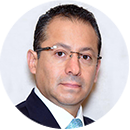
Juan Paulin
Secretary of the XVI Panamerican Conference on Soil Mechanics and Geotechnical Engineering
Papers
Papers presented in Congress
All papers presented at the XVII Pan-American Conference are temporarily available for download in the button below meanwhile the Proceedings are being prepared.
Also, soon you will be able to find them at the ISSMGE website as all other contributions from ISSMGE conferences.
When the edition of the proceedings is finished, and DOI assigned, they will be announced through all communication channels available to the organization.
Papers certificate for autors
Technical Sponsors Exhibition
The Conference Venue will provide a functional and pleasant setting for the Technical Sponsors Exhibition. Refreshments will be served close to the exhibition site to ensure that attendees have plenty of time to visit the exhibit booths.
Should you be interested in booking a space at the conference, please feel free to reach out to us at [email protected].
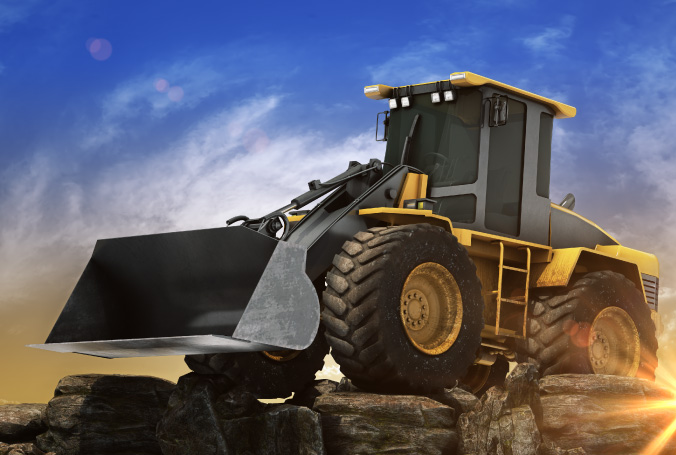
PLATINUM
GOLD
SILVER
BRONZE
KEYNOTE SPEECHES
Share your Geopostales with us
Send your photographs of geological or geotechnical projects or events to the society/association of your country with the information requested in the rules and participate by sharing your experience.
Find the rules and instructions to participate here.
For more information, write to [email protected]
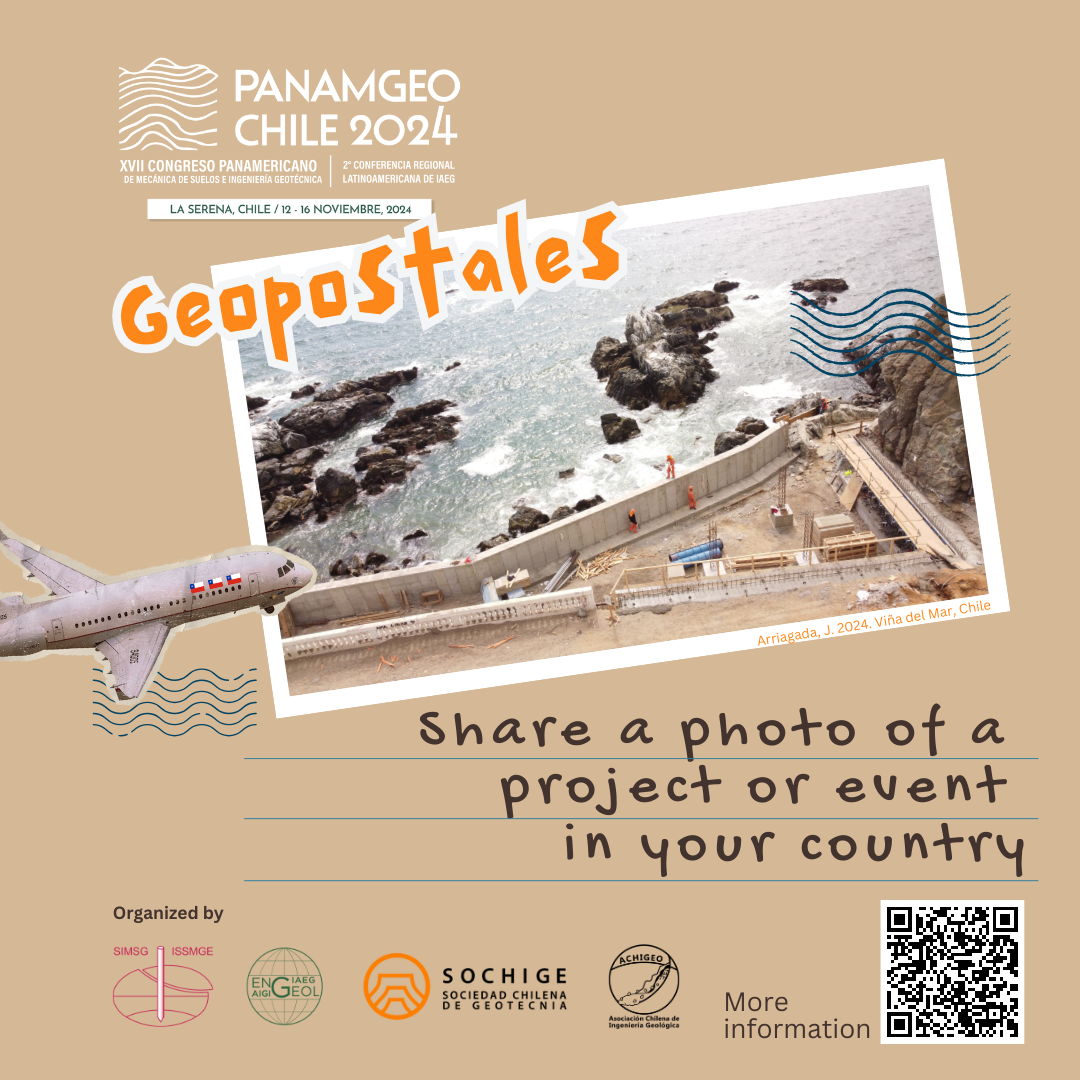


CONVENTION CENTER
Peñuelas Norte 56, Coquimbo, Región de Coquimbo, Chile
hotels

Hotel Diego de Almagro
Francisco de Aguirre Avenue 0665, La Serena, Coquimbo
*Prices do not include tax.
OFFER FOR CONGRESS ASSISTANTS

Hotel Club La Serena
Av. del Mar 1000 Coquimbo. La Serena, Coquimbo
*Prices do not include tax.
OFFER FOR CONGRESS ASSISTANTS

Campanario del Mar
Av. del Mar 4600, La Serena, Coquimbo
*Prices do not include tax.

Terra Diaguita
Eduardo de La Barra 440. La Serena, Coquimbo
*Prices do not include tax.
OFFER FOR CONGRESS ASSISTANTS

Hotel Serena Suite
Parcela 2 Lote 3C, Ruta 5 Norte - Kilometro 470, La Serena
*Prices do not include tax.
OFFER FOR CONGRESS ASSISTANTS

Hotel Costa Real
Francisco de Aguirre 170, La Serena, Coquimbo
*Prices do not include tax.
OFFER FOR CONGRESS ASSISTANTS

Hotel Francisco Aguirre
Gregorio Cordovez 210, La Serena, Coquimbo
*Prices do not include tax.
OFFER FOR CONGRESS ASSISTANTS
Nearby Restaurants

- Peñuelas Nte. 56, Coquimbo
- +56 600 700 6000
- www.enjoy.cl / View on Google Maps
- Peñuelas Nte. 21, 1801996 Coquimbo (inside the hotel)
- +51 242 3133
- View on Google Maps
- Av. Costanera 5450, 1800008 Coquimbo (inside the hotel)
- +56 9 4256 1598
- www.santabrasa.cl / View on Google Maps
- Av. Costanera 5425, 1800008 Coquimbo
- +56 51 266 7499
- www.tololo.cl / View on Google Maps
- Esquina, Peñuelas Norte – Av. Costanera, 1802640 Coquimbo
- www.newpirats.cl / View on Google Maps
- Av. los Pescadores S/N, 1780000 Coquimbo
- +56 9 9377 8854
- www.pueblitopenuelas.cl / View on Google Maps
- Peñuelas Nte. 191, 1800009 Coquimbo
- +56 9 4215 7317
- View on Google Maps
- Av. Costanera 5451, 1800008 Coquimbo
- www.instagram.com / View on Google Maps
- Rengo 4637, Coquimbo
- +56 9 7495 6652
- www.domingadominguez.cl / View on Google Maps
- Rengo 4609, 1780000 Coquimbo
- +56 9 9947 8809
- www.fogondelmar.cl / View on Google Maps
- Av. Costanera 6, 1800298 Coquimbo
- View on Google Maps
- Av. del Mar 5700, 1710620 La Serena, Coquimbo
- +56 9 7739 1492
- www.instagram.com / View on Google Maps
- Av. del Mar 5200, 1710620 La Serena, Coquimbo
- +56 51 224 2656
- www.tololo.cl / View on Google Maps
- Av. del Mar 4500, 1700000 Coquimbo, La Serena, Coquimbo
- huentelauquenrestobarpizzeria.ola.click / View on Google Maps
- Av. del Mar 4600, 1711019 La Serena, Coquimbo
- www.elmuellepub.cl / View on Google Maps
- Av. del Mar 4000, 1711016 La Serena, Coquimbo
- +56 9 6732 2554
- www.instagram.com / View on Google Maps
- Contact the company to view the menu
- Av. Costanera 5700, 1780000 Coquimbo
- +569 2162 6906
- www.instagram.com / View on Google Maps
- Contact the company to view the menu
- Av. Costanera 5600, 1780000 La Serena, Coquimbo
- +569 3383 6685
- www.elplayaparaiso.cl/ / View on Google Maps
- Av. Costanera 5633, 1800005 Coquimbo
- www.instagram.com / View on Google Maps
- Camino de la fragata, Peñuelas Nte. 19, 1780000 Coquimbo
- +569 6789 7269
- www.completosoriente.cl / View on Google Maps
- Canto del Agua 59, La Serena, Coquimbo
- www.instagram.com / View on Google Maps
- Contact the company to view the menu

TOURISM IN LA SERENA
Discover the incredible experiences that Viajes Mirador has to offer. Make the most of your visit to La Serena and create unforgettable memories.

TOURISM IN LA SERENA
Discover the incredible experiences that Viajes Mirador has to offer. Make the most of your visit to La Serena and create unforgettable memories.
LA SERENA, COQUIMBO REGION, CHILE


Images and videos from Sernatur Chile (www.sernatur.cl)
Discover the virtues and surprises that the so-called “Small North” of Chile hides. Located less than 500 kilometers (310 miles) from the capital, Santiago (there are daily flights between the two cities), this destination offers its visitors nice weather throughout the year, extensive plantations of vineyards and fruits, and one of the clearest skies in the world for gazing at the stars. One of the favorite touristic places for Chileans – and we’re sure soon yours too – is the city of La Serena and its surrounding areas. Its beaches, coastline and outdoors, where many sports and leisure activities can be enjoyed, as well as its wide gastronomic offer, its beautiful night skies, and many more appeals, make this city a notable destination for those who would like to know the Small North of Chile.
Take advantage of the beaches of La Serena during the spring and summer, walk along the long Avenida del Mar or go shopping at Recova, the area’s most famous market and arts & crafts fair. In Coquimbo, 9 km from La Serena. you can’t miss La Herradura beach and Barrio Inglés’ nightlife. You can also try your luck at the casino. If you have a sports soul, come and enjoy the many adrenaline sports of La Serena and Coquimbo: trekking, sport fishing, surfing and paragliding are some of the activities waiting for you.
The Elqui valley is a spectacle in itself. The Valley, deeply carved by the Elqui River (formerly called the Coquimbo River), begins only 15 km from La Serena, from where the road makes its way into the Andes Mountains. The sun shines more than 360 days a year in the Elqui Valley, a privileged climate that makes the perfect ripening of the grapes possible in order to produce the best pisco and some of the best wines of Chile. With one of the clearest skies in the southern hemisphere, several international astronomical organizations have installed their observatories here on the summits of the Pachón and the Tololo hills. But for those who love to gaze at the night sky, the spectacle of stars is visible to the naked eye or also with smaller telescopes. The Elqui Valley’s special climatic conditions, with sunny days and cold nights, as well as its fertile land and protected hillsides, make this the most exceptional wine region of northern Chile. In addition to the cultivation of grapes for the production of pisco, Syrah is the leading variety planted for the production of red wine, and Sauvignon Blanc for white wine. Many wineries are open to the public and have wine tastings, tours of their vineyards and facilities, which can be visited entirely in a few hours. The small and sunny traditional town of Vicuña is the main city of the Elqui Valley. This is where Gabriela Mistral, Chilean poet, Nobel Prize winner in 1945, was born. In addition to all these enjoyable scenarios, the Elqui Valley is known for its mystical energy. The locals say it is caused by the clarity of the skies and the direct light that comes from the stars, which translates into healing energies, giving its visitors a moment of total relaxation and disconnection, which can be further enhanced with the wide range of alternative therapies, meditation and spa centers that exist in the place.
You can find more information about Chile and La Serena in these videos:

